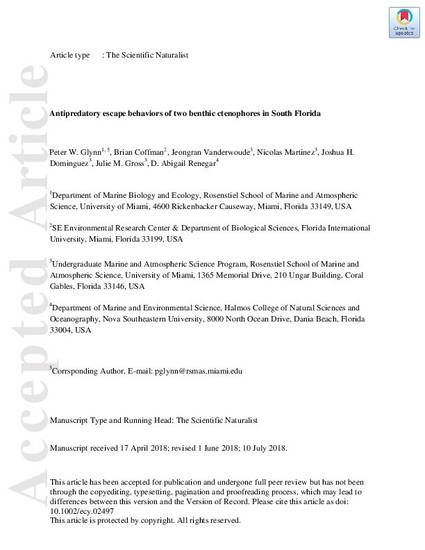
Benthic ctenophores, members of the family Coeloplanidae (Order Platyctenida, Phylum Ctenophora) are more widespread and abundant in tropical and subtropical marine environments than formerly recognized. Coeloplanid ctenophores are members of the most speciose family of benthic ctenophores, with 33 recognized species of Coeloplana and one species of the genus Vallicula (Mills 1998). The majority of coeloplanids are ectosymbionts of algae and diverse benthic invertebrates (Matsumoto 1999, Alamaru et al. 2015). Hundreds to thousands of individuals can occupy preferred habitats in < 1 m2 of substrate patches. Galt (1998) noted Vallicula multiformis inhabiting algae in Hawaii at population densities as high as 10,000 individuals m−2. Also, in South Florida Glynn et al. (2017) observed 100s of individuals of V. multiformis inhabiting macroalgae, and 1,000 to 1,500 individuals of Coeloplana waltoni on octocoral stems.
Available at: http://works.bepress.com/d-abigail-renegar/21/

©2018 Ecological Society of America. All rights reserved.